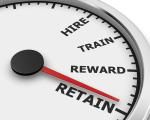CHICAGO — It’s not enough to rely on “the way it’s always been done” in business, and in a rapidly evolving industry such as dry cleaning, that mindset can actively damage a business and its future prospects. Successful dry cleaners know that their business has to change with the times in order to serve their customers in the way they expect — and demand — to be served.
In Part 1 of this series, we explored the changing shape of dry cleaning in today’s market and how the pandemic and changing customer needs and demands have forced some cleaners to reassess their business model. In Part 2, we examined some areas that many cleaners are using to better connect with their customers — along with some areas that might have seen better days. Today, we’ll conclude with a discussion on options when it comes to making a pivot, and the mindset necessary for success.
When — and How Much — to Pivot?
For dry cleaners who see that their business model needs to change, the next determination is what to change. Deciding which services are profitable and which aren’t is the first step toward making adjustments.
“One of the most common mistakes is most dry cleaners truly do not know what it costs to produce a garment,” says Kermit Engh, owner of Fashion Cleaners in Omaha, Nebraska, and the managing partner of Methods for Management (MfM), a consulting firm for the drycleaning industry, “They don’t know what their actual costs are, and their price tables have morphed over the years without analysis of what is profitable and what isn’t.”
Studying their existing business is necessary, Engh believes, before success can be found in new offerings.
“The first thing an operator needs to do is to actually calculate what it costs to produce a single garment,” he says. “‘What is my break-even point of my business from a revenue-and-expense standpoint? What is the profit that I am targeting as my goal?’”
Once these questions are answered, the next step is to work backward.
“If I’m looking for a 15% profit margin, what do I need to charge my customers to be able to have that as my result?” Engh asks. “Too many people don’t budget. They don’t know their costs. They just say, ‘Well, this is what’s left over. This is what I’ve got.’ That’s about all the planning that they do. Understanding what it costs to produce a garment is step No. 1.”
When considering profitability, however, Christopher White, executive director of the consulting firm America’s Best Cleaners (ABC), cautions cleaners to take a complete view of their company instead of separate elements.
“A profit center might not look that sexy to you if it’s just breaking even,” he says, “but maybe those dollars are supporting the profitability of some other services in your business. It may do this by keeping your staff employed and giving them enough hours so your skilled labor doesn’t find another job or have to work a second job.
“Also, if you keep employees from these break-even services, you might not have to pay overtime as much, and you have an additional employee if someone calls in sick. You need to look at it holistically.”
When this analysis is done, Barry says to look to add things in demand by your customer base.
“Up until six or seven months ago, we didn’t have a delivery component because of our low price point,” he says. “I think you’re seeing the high-end becoming successful because most high-ends include pickup and delivery in their pricing. They are offering that service for ‘no cost,’ and they’re seeing an increase in sales and revenue.”
When looking at services such as delivery, Bob Barry, president and CEO of the ZIPS Cleaners network of drycleaning stores, urges cleaners to ask, “How could I do that?”
“If you can’t do it yourself, there are some third-party delivery services that are reliable,” he says. “The question then becomes, can you integrate your processes and your software system? Or, can you get to a point where your store is 24/7, meaning customers can drop off their garments anytime, and maybe even pick them up so they are not stuck between the hours of your operations? Those are the things I would look at.”
“Just be thoughtful about it,” White says. “Do some thinking, and do some testing. We’re such a human-based business — it’s critical that you engage your team members and listen to them honestly. Give them the time to speak and be involved in the process. If you do, I think you’d be surprised how easy it’s going to be to roll it out and how easy it will be to make some minor changes and shifts moving forward, whatever it is.”
The Mindset for Success
So, what’s the attitude of the dry cleaner who will not only survive but thrive in a changing industry?
“I can boil that down to one word: optimism,” Engh says. “They are still optimistic. They are open to new ideas and new technology. They’re willing to take the step out of what has always been. And they are open to changes and advancements in technology. If you’ve got somebody who is pessimistic, they’re already defeated.”
“It’s our job as leaders in the organization to predict the market, educate our team on the reasons why we’re trying new things, clearly communicate to our customers, and make sure that we’re measuring the results of the decisions we made,” Barry says.
“We have traditionally been a reactive business,” White says. “You’ve got to be forward-thinking and proactive. You’ve got to be creating your future — not reacting to it. You need to be available and realize that you have to be open to adaptation.”
For Part 1 of this series, click HERE. For Part 2, click HERE.
Have a question or comment? E-mail our editor Dave Davis at [email protected].



































































